Summary
- Optical interference
- Young's interference experiment
- Thin film interference
Quiz bonus Ch.36
Chapter 37
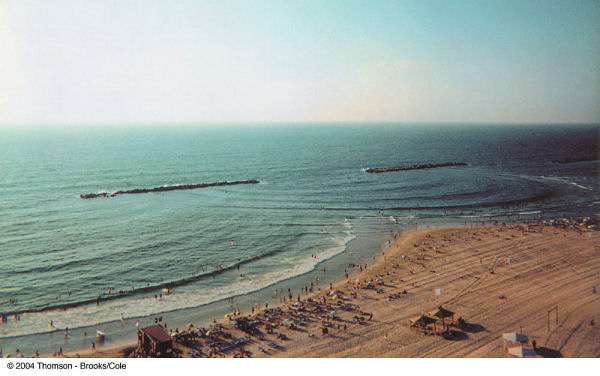
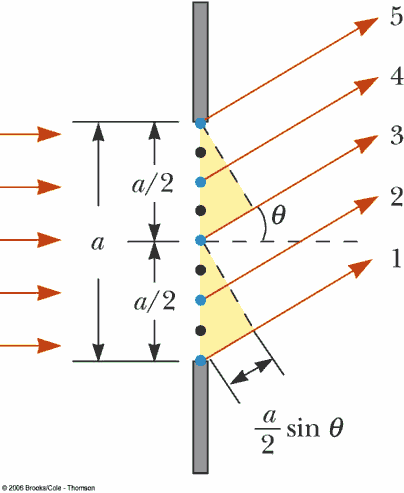
- Single-slit diffraction
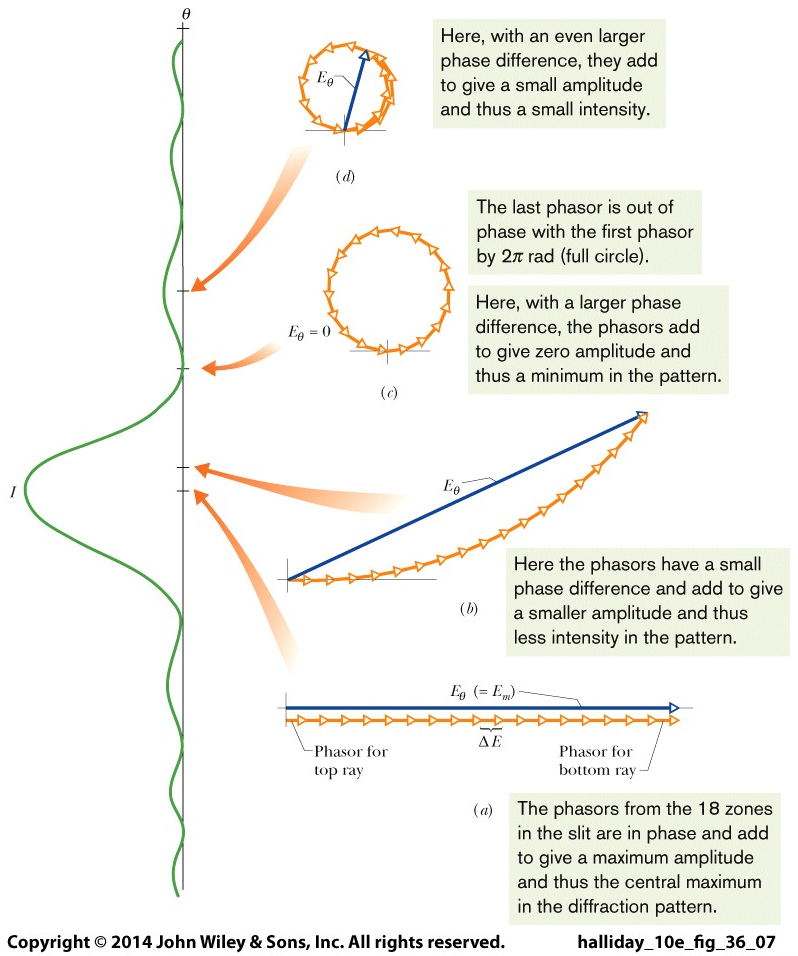
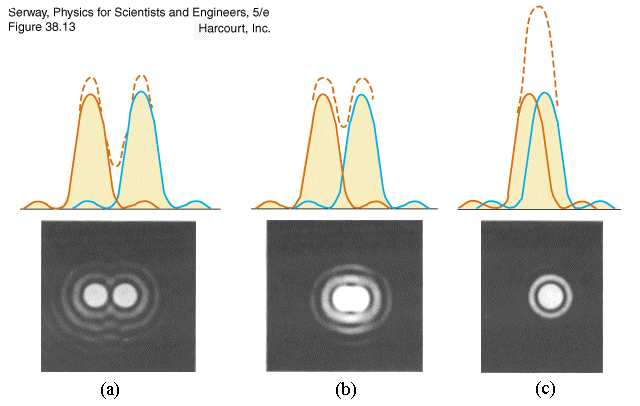
- Circular apertures
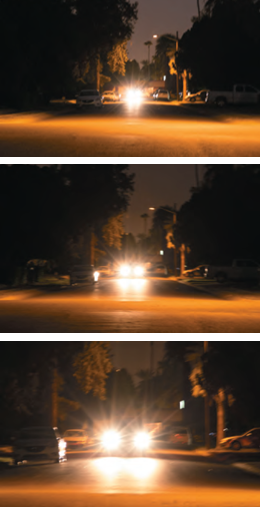
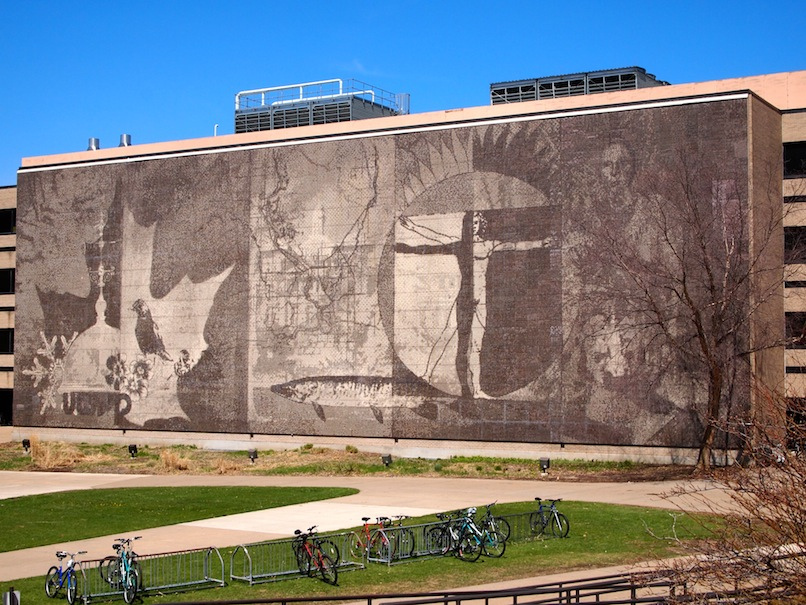
Giant mural at UWSP composed of
thousands of geometrically patterned, one inch tiles. The mural project was overseen by
Art Professor Richard C. Schneider and completed with the help of numerous students over the period
between 1977 and 1982.
- Practice:
Try these additional examples
Example #6
Example #7
Example #8
Example #9
Example #10
- Prepare:
Read textbook section 36-5 before the next lecture
POP5 27.qq.3
One microscope slide is placed on top of another with their left edges in contact
and a human hair under the right edge of the upper slide. As a result, a wedge of
air exists between the slides. An interference pattern results when monochromatic light is
incident on the wedge. What kind of fringe is seen at the left edges of the slides?
A. a dark fringe
B. a bright fringe
C. a circular fringe
D. impossible to determine
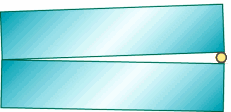 Answer
Answer
POP5 26.qq.6
A converging lens forms a sharp image of a candle. If you cover the top half of the lens with a piece of paper, what happens to the appearance of the image?
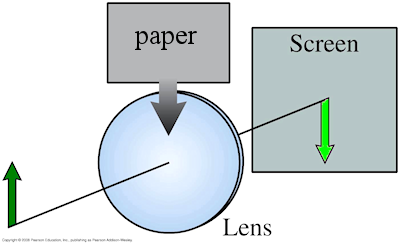
A. The bottom half disappears.
B. The top half disappears.
C. The entire image is visible but dimmer.
D. The entire image inverts upside-down.
Answer
Walker5e 28.CnEx.10
If the width of the slit through which light passes is reduced, the central bright fringe will _____.
A. become wider
B. become narrower
C. remain the same size
Answer
POP5 27.27
Coherent λ = 5.00 cm microwaves enter a 36.0 cm wide window. Where is the first minimum along a wall 6.50 m
away?
A. 18.0 cm
B. 23.4 cm
C. 91.2 cm
D. 117 cm
Answer
klm
A 2.70-m diameter telescope is used to send a λ = 694.3 nm laser to the Moon
384,000 km away. If the telescope optics are diffraction limited, what is the diameter of the spot
on the moon?
A. 96 m
B. 241 m
C. 585 m
D. 130 km
Answer
PSE6 38.22a
When Mars is nearest the Earth, it is 88.6×106 km away. Mars is viewed at
that time through a 30.0-cm-diameter telescope. If λ = 590 nm, what is the
angular resolution of the telescope? (1 degree = 3600 arcseconds)
A. 157 arcsec
B. 1.37 arcsec
C. 2.40 arcsec
D. 0.495 arcsec
Answer
PSE6 38.22b
When Mars is nearest the Earth, it is 88.6×106 km away. Mars is viewed at
that time through a 30.0-cm-diameter telescope. If λ = 590 nm, what is the
smallest distance that can be resolved on Mars?
A. 213 km
B. 5.90 km
C. 2.40 km
D. 0.495 km
Answer
Walker5e 28.46
Green light (λ = 546 nm) strikes a single slit at normal incidence. What width slit will produce a central maximum that is 2.75 cm wide on a screen 1.80 m from the slit?
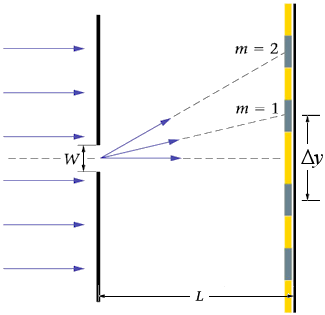 A. 35.7 µm
A. 35.7 µm
B. 71.5 µm
C. 143 µm
D. 546 µm
Answer
Walker5e 28.p.52
Considering only diffraction effects, do your eyes have greater resolution on a dark cloudy day or on a bright sunny day?
A. dark cloudy day
B. bright sunny day
C. They have the same resolution on either day.
Answer
Walker5e 28.EYU.5 mod
If you view the world with infrared light, is your resolution greater than, less than, or equal to your resolution when viewing the world with visible light?
A. greater than
B. less than
C. equal to
Answer
gc6 25.49mod
What minimum diameter telescope on Earth is required to resolve objects on the Moon's surface that
are 1.0 km apart? λ = 550 nm and L = 3.84×108 m.
A. 2.06 m
B. 0.918 m
C. 0.774 m
D. 0.258 m
Answer
Walker5e 28.85
The colossal squid (Mesonychoteuthis hamiltoni) has the largest eyes documented in the animal kingdom, at least 27 cm in diameter. The eyes are large in order to see in dim light, but they also have terrific resolution. If the squid's eyes are free of defects, find the maximum distance at which the squid could distinguish a pair of lights on a ship that are separated by 1.8 m. Assume 555-nm light, a pupil diameter of 11 cm, and an average index of refraction for the eye of 1.36.
A. 25 m
B. 400 m
C. 2.5 km
D. 400 km
Answer
A. a dark fringe
The wave going from the top glass to the air space will not invert, but the wave
going from the air space to the bottom glass will. The two reflected waves will therefore be 180° out of phase
with each other. At the left edge of the microscope slide the second wave will not travel a significant
distance through the air gap because the width of the air gap is vanishingly small. Therefore, the fringe
at the left edge will be a dark one.
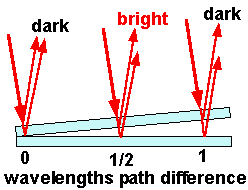
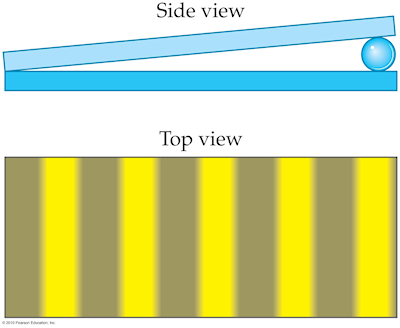
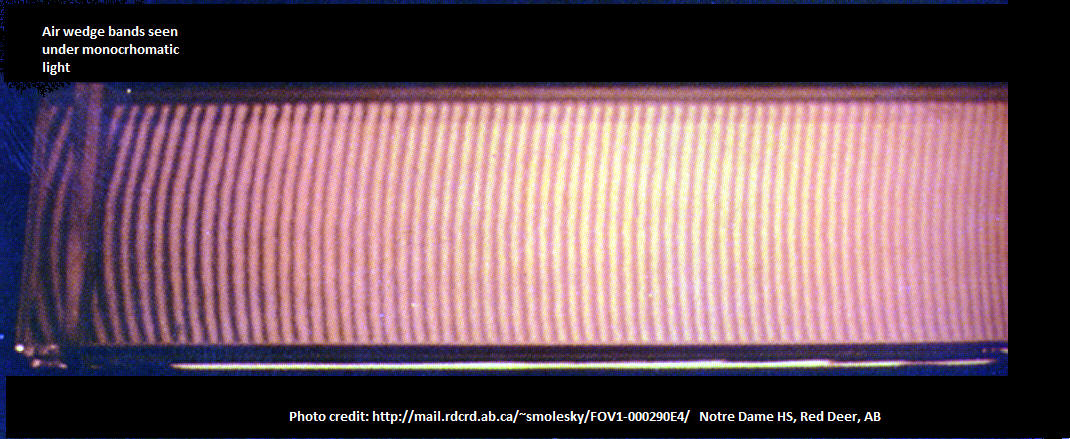
C. The entire image is visible but dimmer.
The paper blocks half of the light rays and the image becomes dimmer. However, the other half of the lens still directs rays to every part of the real image of the candle, so the entire image is visible. This is an example of an aperture stop, which limits the total amount of light that passes through a system (like the aperture setting of a camera). A field stop at the film plane (the location of the real image) would indeed block half of the image.
A. become wider
A narrower slit causes the light waves to spread out more because the slit becomes more like a point source of light. Mathematically, the right side of the equation m λ will remain constant, so a decrease in W forces an increase in θdark.
C. 91.2 cm

B. 241 m

D. 0.495 arcsec

A. 213 km
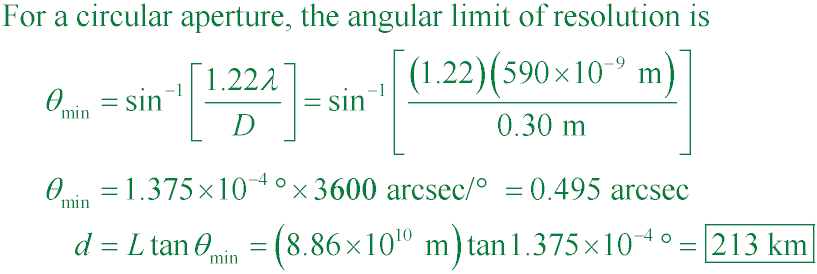
B. 71.5 µm
The angle can be found from geometry, keeping in mind it measures the angle between the center of central bright fringe to its edge, so use half the width of the central maximum in your calculation.
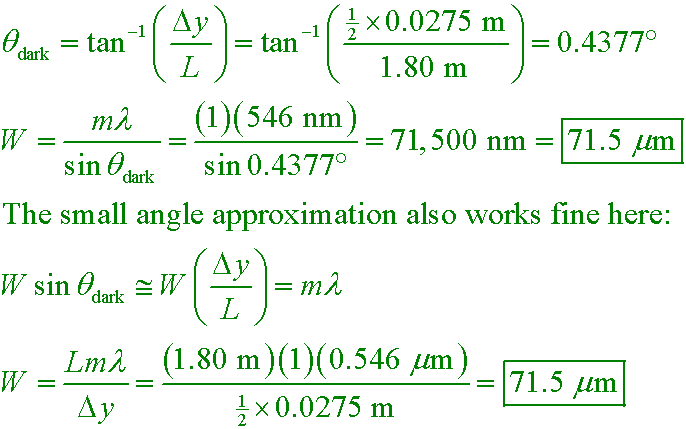
A. dark cloudy day
On a cloudy day your pupil diameter will increase in order to allow more light in. This will decrease the angular size of the diffraction pattern created by the pupil and increase the resolution. This
reasoning is true if the resolution of the eye were limited by diffraction effects. However, in practice there are
other aberrations of the eye that worsen when the pupil is wider, and we can generally see slightly better on a
bright sunny day.
B. less than
The longer wavelength of infrared light means more diffraction, a larger angle θmin, and a decreased ability to distinguish two objects in the distance. In contrast, a smaller θmin would correspond to a greater resolution.
D. 0.258 m

D. 400 km

Notice that the wavelength of light inside the squid’s eye is reduced by the average index of refraction n = 1.36 of the eye. This effectively reduces the angular separation that can be resolved and increases the maximum distance. The curvature of the Earth would make it difficult for a squid to see a ship that is 400 km away! Although squid eyes are not diffraction limited and could not see this clearly, their large eyes do give them a remarkable visual acuity.






 Answer
Answer

 A. 35.7 µm
A. 35.7 µm








